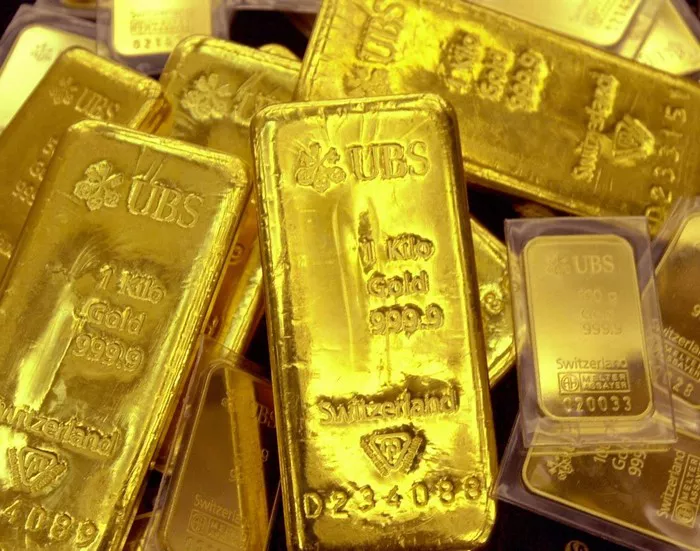Forecasting the future trends of gold prices is a challenging task that involves various factors and variables. Gold, often considered a safe haven investment, has a complex relationship with economic, geopolitical, and market dynamics. While it is impossible to predict with certainty how gold prices will evolve in the future, analysts and experts utilize a range of indicators and factors to provide insights into potential trends. In this article, we will explore the factors that influence gold prices and discuss some perspectives on the future direction of this precious metal.
1. Historical Performance of Gold
Gold has a long history as a valuable and sought-after asset. It has served as a store of value, a hedge against inflation, and a safe haven during times of economic uncertainty. When examining future trends, it can be helpful to review historical patterns and performance. However, it is important to note that past performance does not guarantee future results, and market dynamics can change over time.
2. Economic Factors
Gold prices are influenced by a range of economic factors, including:
Inflation: Gold is often seen as a hedge against inflation. When inflationary pressures increase, investors may turn to gold as a way to preserve their purchasing power.
Interest Rates: There is an inverse relationship between interest rates and gold prices. When interest rates rise, the opportunity cost of holding gold (which does not generate interest or dividends) increases, potentially leading to a decrease in demand and lower prices.
Currency Movements: Gold is priced in U.S. dollars, and currency fluctuations can impact its value. When the U.S. dollar strengthens against other currencies, the price of gold in those currencies may rise, potentially increasing demand.
3. Geopolitical Factors
Geopolitical events and uncertainties can have a significant impact on gold prices. These factors include:
Political Instability: When geopolitical tensions or conflicts arise, investors may seek the safety of gold as a hedge against uncertainty and potential market volatility.
Trade Disputes: Trade disputes between countries can disrupt global markets and impact investor sentiment. In such situations, gold may be viewed as a safe haven investment, leading to increased demand and higher prices.
4. Market Sentiment and Investor Behavior
Market sentiment and investor behavior play a crucial role in determining gold prices. These factors include:
Risk Appetite: During periods of heightened market volatility or increased risk aversion, investors may flock to gold as a safe haven asset, driving up prices.
Investor Demand: Demand for gold can be influenced by factors such as investor sentiment, expectations of future economic conditions, and market speculation. Shifts in investor demand can impact prices.
Market Speculation: Gold prices can be influenced by speculative trading activities and short-term market trends. Speculators and traders may attempt to profit from short-term price movements, leading to price fluctuations.
5. Supply and Demand Dynamics
Supply and demand dynamics are important considerations in understanding gold price trends. Factors affecting supply and demand include:
Production Levels: Gold mining production and exploration activities can impact supply levels. Lower production or disruptions in mining operations may decrease the overall supply of gold, potentially leading to higher prices.
Central Bank Reserves: Central banks hold significant gold reserves, and their buying or selling activities can influence the global supply and demand dynamics of gold.
Jewelry and Industrial Demand: Gold is used in various industries, including jewelry, electronics, and dentistry. Changes in demand from these sectors can affect overall demand and prices.
6. Expert Opinions and Forecasts
Financial institutions, market analysts, and experts often provide opinions and forecasts regarding future gold price trends. These opinions are based on a combination of factors, including economic indicators, market trends, geopolitical events, and historical patterns. It is important to consider multiple perspectives and the rationale behind these forecasts, as individual opinions can vary.
7. Limitations and Uncertainties
It is crucial to acknowledge the inherent limitations and uncertainties in predicting future trends of gold prices. The global economy, geopolitical landscape, and market conditions are complex and subject to change. Unforeseen events, policy shifts, or unexpected economic developments can significantly impact gold prices in ways that may not align with previous forecasts or expectations.
Conclusion
Predicting the future trends of gold prices is an intricate and challenging task. While historical patterns, economic factors, geopolitical events, market sentiment, supply and demand dynamics, expert opinions, and forecasts provide insights, they cannot guarantee future outcomes. Investors and analysts should approach gold price forecasts with caution, considering the range of factors that influence this precious metal’s value. Diversification, comprehensive research, and consultation with financial professionals can help individuals make informed investment decisions based on their unique circumstances and risk tolerance.


